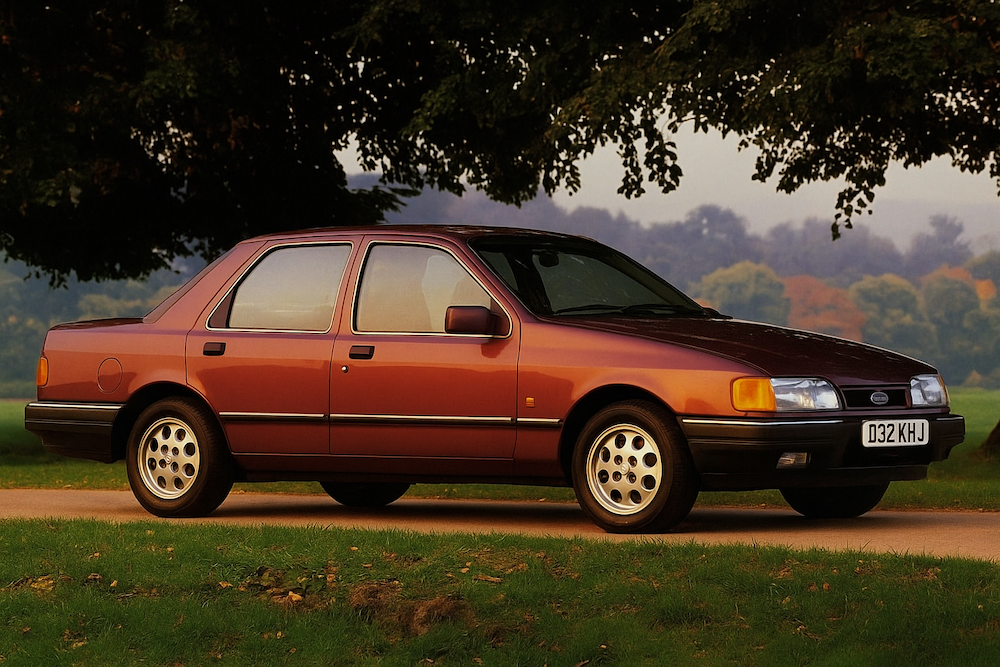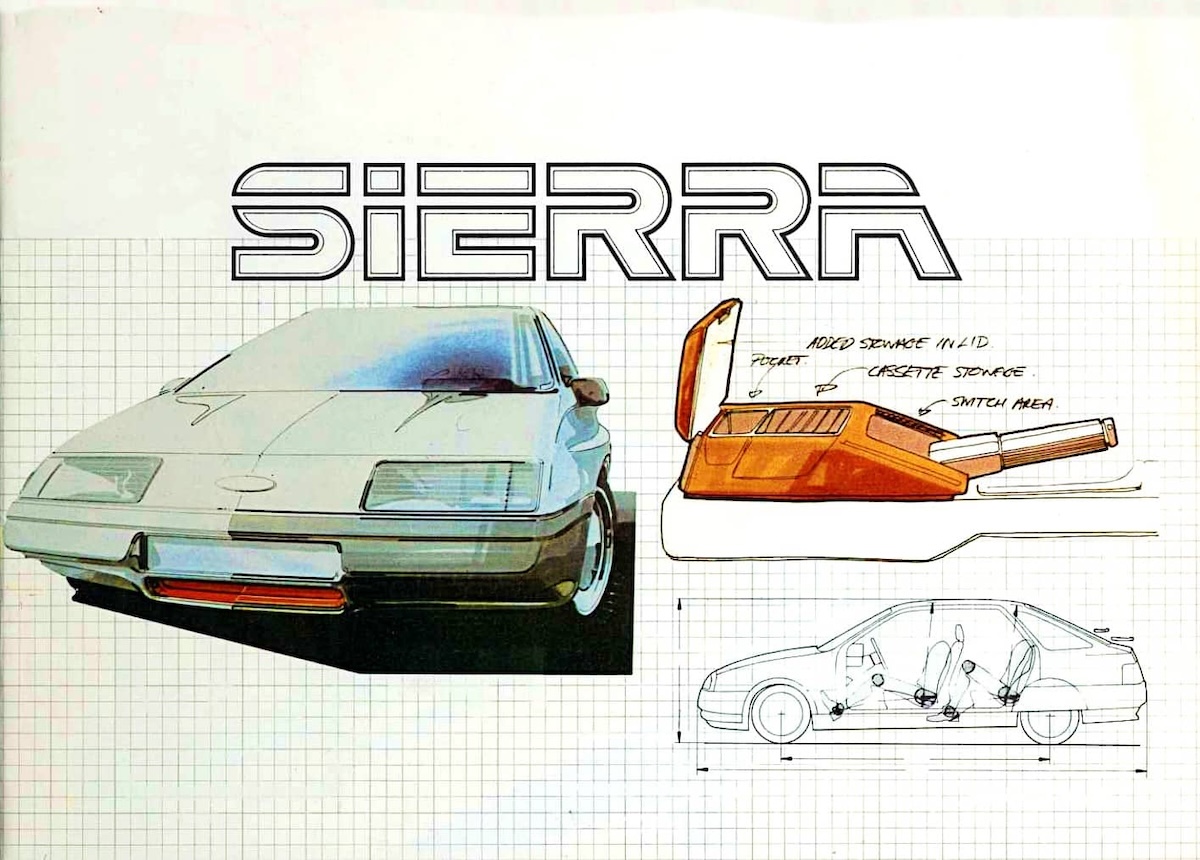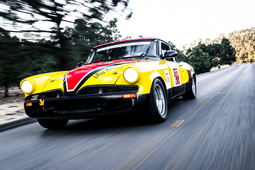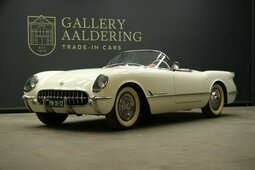The Ford Sierra just slipped in from the dying days of rear-wheel drive family cars. Sending four-cylinder power to the back axle already felt like a relic, something that stole space inside the cabin and under the hood. The transmission tunnel ate into the driver and passenger footwell and the steering wheel was so close to your chest that you could almost honk the horn with your nipples.
By the early 1980s, the competition – Opel, Volkswagen, Peugeot, Rover, Volvo, Fiat and the Japanese manufacturers – were already firmly committed to front-wheel drive. For instance, Opel’s Ascona C with a FWD layout arrived in 1981, a year before Sierra. That was the climate of the mid-size car market. Everyone was moving forward with the optimal front-drive solution for efficiency, packaging and cheapness, but by doing so, losing in dynamic abilities and prestige. Drivers know that rear-drive saloons are automatically better.
A Glimpse of the Future
But the Sierra was far more than just a latecomer. It opened a new chapter in how automotive technology and design were perceived, while still carrying a trace of the past. Ford’s larger Granada (later Scorpio) was also rear-wheel drive and Sierra’s direct predecessor, the Taunus, had been launched barely three years after World War II. And while VW’s Jetta or Volvo’s 340 looked like yesterday’s lunch, the capsule-like body shape and futuristic design of the Sierra appeared to have landed from the future. It has now been with us for 45 years, yet somehow it doesn’t look that old.
The Sierra made a huge impact. When the hatchback first appeared in dealerships and showrooms in 1982, it shocked people. Some thought it was just a rolling prototype, others assumed it must be another avantgarde Renault or Citroën. One of its key innovations was the closed-off nose: no traditional grille, headlights integrated aerodynamically and engine air intake hidden in the bumper below. Ford even carried the idea to America, where the 1985 Ford Taurus became another technological sensation.
German drivers embraced the Sierra immediately – within the first months, it tripled Ford’s sedan sales compared to the outgoing Taunus. The numbers still weren’t massive, because on the continent the Taunus never had the popularity of the right-hand-drive Cortina in Britain, where loving a Ford was considered more important than remembering your children’s birthdays.
Europe did have another problem: the Audi 100. Ford had no idea that Audi was about to unleash its wedge-shaped spaceship, which would go on to become Europe’s Car of the Year in 1983. In hindsight, it hardly mattered – Ford had just acquired the Italian design studio Ghia, whose talents would shape the company’s future models.
Winning the Long Game
It took time for the Sierra’s design to prove itself. But once it did, sales climbed to nearly 4 percent of all new cars sold in Europe – about the same market share as Toyota holds across Europe today. By then, Sierra’s rivals already looked dated. Audi was still selling the second-generation 80, and Volkswagen’s B2 Passat looked antique even when new. The Sierra’s only true design ally was the Citroën BX. A few years later, Peugeot’s 405, Audi’s 80 B3, VW’s Passat B3 and Renault’s 19 all adopted similar aerodynamic styling cues, proving how fresh and forward-thinking Ford had been. Even after seven years on the market, the Sierra still looked modern next to its newly released competitors. Credit goes to the design team and to Bob Lutz, then-president of Ford Europe. His experience guiding BMW’s M division and Opel’s product strategy gave Ford the vision it needed.
By the mid-cycle facelift, the Sierra gained smoked rear lights, a proper sedan body, a redesigned nose, a new dashboard and updated drivetrains. The real treasure of these later models was their engines. European motors of the 1980s still resembled postwar tractor units – black rubber hoses, heavy iron and the occasional splash of colored metal, with little plastic or marketing. Ford saw the opportunity and introduced the advanced i4 four-cylinder: twin-cam chain-driven timing, electronic fuel injection and neat packaging that impressed as much when you opened the hood as it did on the road. These engines fire gently and run quietly. Their vibrations are barely felt on the thick, textured steering wheel.
Behind the Wheel
The Sierra’s technical strengths revealed themselves the moment you drove it out of the dealership. Independent suspension on all four wheels kept it composed, squatting and rising with reassuring balance. In corners it leaned openly, without hiding its movement, but maintaining confidence. Mechanical rhythm in these engines is so simple and clear you can count the 4 strokes. Most Sierras host a small surprise that is sat on the left side of the dashboard: they have a heated windshield, a Ford invention. Trials of this system began in America in the 1970s, and by 1985 heated front glass was fitted to the Granada.
Higher-trim Ghia models also feature a colored display showing open doors or low outside temperatures. The central message strip warns of low coolant or worn brake pads. These smart features eventually trickled down to simpler models too, by the GL trim, the Sierra was already reminding you with a sound if you left the lights on. The gear linkage in these cars is long, soft and nearly soundless, as if everything had been greased to perfection. It all makes sense when you drive a Sierra. It’s the perfect German dad car – quiet, modest, versatile and even fast when ask it. Just like most dads.
---
Start your adventure by exploring our wide range of Car Categories. Then, step into the Classic Passion Shop and discover unique products from our partners — must-haves for every true enthusiast looking to elevate their collection!















